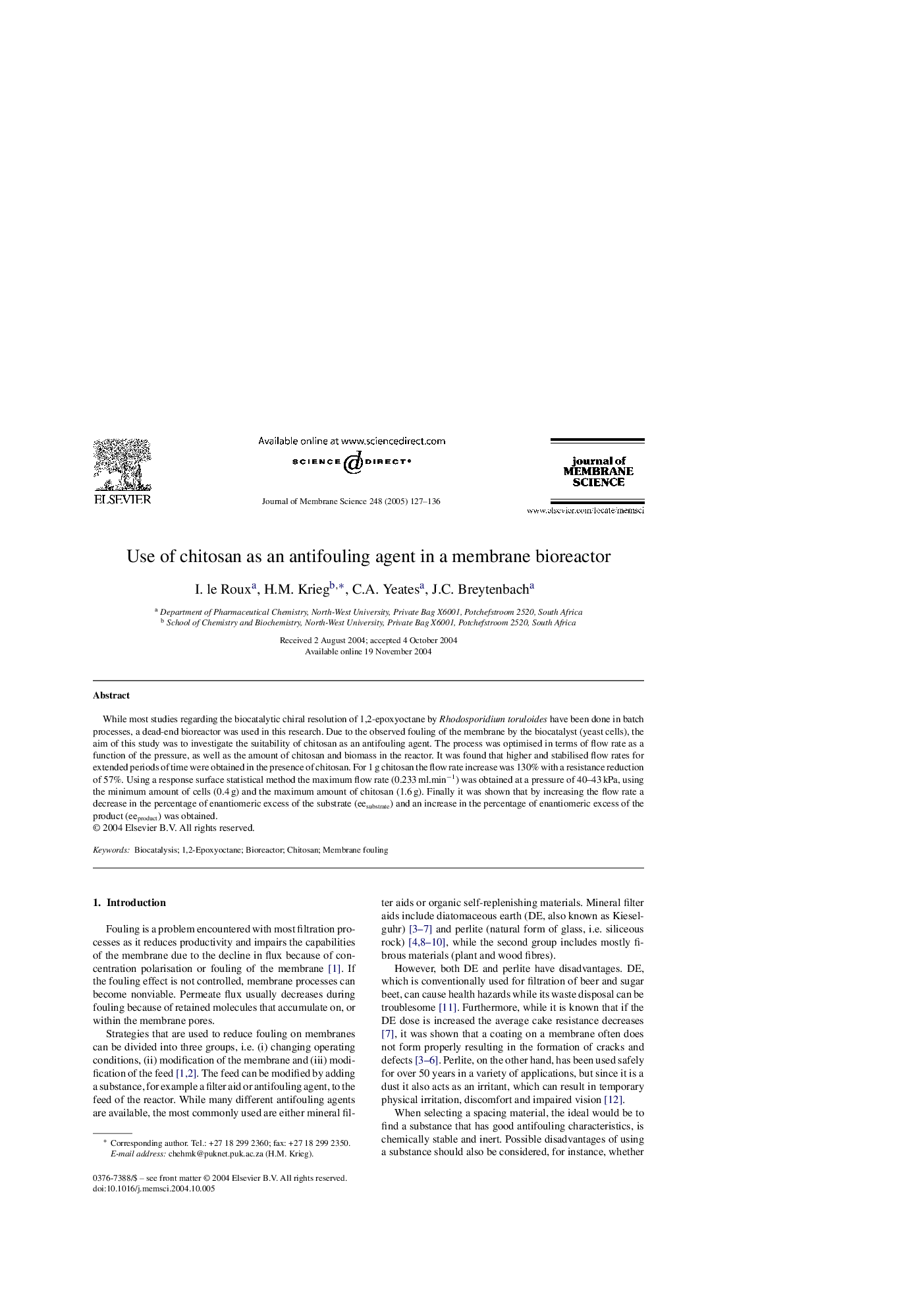| Article ID | Journal | Published Year | Pages | File Type |
|---|---|---|---|---|
| 9685084 | Journal of Membrane Science | 2005 | 10 Pages |
Abstract
While most studies regarding the biocatalytic chiral resolution of 1,2-epoxyoctane by Rhodosporidium toruloides have been done in batch processes, a dead-end bioreactor was used in this research. Due to the observed fouling of the membrane by the biocatalyst (yeast cells), the aim of this study was to investigate the suitability of chitosan as an antifouling agent. The process was optimised in terms of flow rate as a function of the pressure, as well as the amount of chitosan and biomass in the reactor. It was found that higher and stabilised flow rates for extended periods of time were obtained in the presence of chitosan. For 1Â g chitosan the flow rate increase was 130% with a resistance reduction of 57%. Using a response surface statistical method the maximum flow rate (0.233Â ml.minâ1) was obtained at a pressure of 40-43Â kPa, using the minimum amount of cells (0.4Â g) and the maximum amount of chitosan (1.6Â g). Finally it was shown that by increasing the flow rate a decrease in the percentage of enantiomeric excess of the substrate (eesubstrate) and an increase in the percentage of enantiomeric excess of the product (eeproduct) was obtained.
Related Topics
Physical Sciences and Engineering
Chemical Engineering
Filtration and Separation
Authors
I. le Roux, H.M. Krieg, C.A. Yeates, J.C. Breytenbach,
